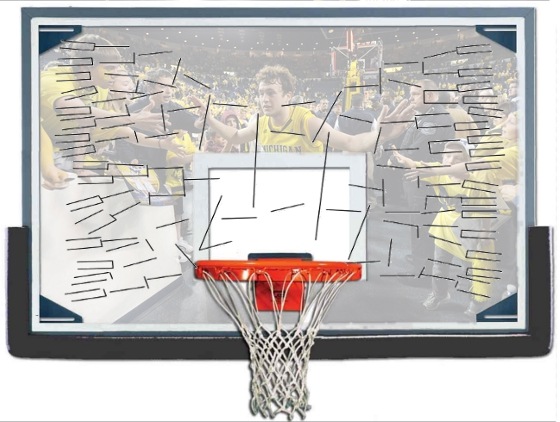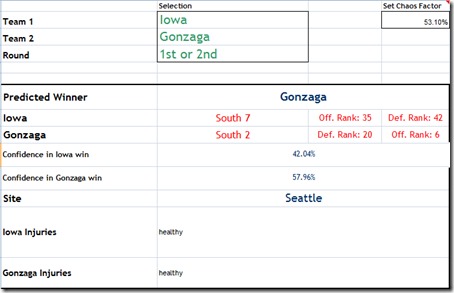autobids

Howdy bracketeers! Annual bracket building post is annual, though my predictions last year wound up pretty bad. First the tools and how to use them.
Kenpom. The all-knowing. This year's best team not invited was #45 Florida. The worst team in is #250 Hampton. I had to know, so I looked up the worst team in the history of Kenpom (since 2002) to be invited to the Dance. It's Mississippi Valley State, the 298th team in 2008.
In fact there's a pretty enormous drop-off from most of the 16 seeds and the MEAC and SWAC entrants, who had an average Pyth of 0.296 (i.e. they'd win less than 30% of their games vs. an average opponent). For reference, the worst Big Ten teams in that span (2003-2005 Penn State) were .361, .334, and .341 respectively. In fact I only found six power conference teams—2013 TCU, 2008 Oregon State, 2012 Utah, 2013 Mississippi State, 2012 BC and 2011 Wake Forest—who've ever been worse than the average MEAC or SWAC champion. I get the part about giving the top seeds basically a bye, but the tournament can find more deserving small schools than whoever won a conference tournament whose competition level is below that of many high school leagues.
For what it's worth, Kentucky this year is the best team in the history of Kenpom. The only two in sniffing distance were 2008 Kansas and 2013 Louisville.
Seth's Annual Matchup Maker. This lets you set a chaos factor and match any two opponents, immediately seeing where the game will be played and any relevant injuries. You just input the teams and the round. Front page looks thus:
FiveThirtyEight. Lots of tools on there, as well as important articles about how, for example, pre-season rankings matter despite plucky things that occurred after.
The Power Rank. Listeners to Brian's weekly roundtable on WTKA know Ed Feng. Ed creates this:
(right is zoomed)
…interactive chart using his win probabilities so you can see how stupid your picks are relative to each other. Run around the circle to make sure you haven't picked a dead in the water first round upset, but I think he's best at end game. This year you can see Kentucky is in a league of its own, then Zona, Duke, Nova, Wisconsin, Gonzaga and Virginia are a clear second tier.
Bracket Science Bracketmaster. Peter Tiernan is getting better at monetizing his comprehensive bracket database, which is unfortunate because I really liked to use the Bracketmaster for patterns, like what kind of team does Wisconsin usually lose to in the tourney, has this coach been to the Dance before, and things that super hardcore NCAA basketball fans know and I don't know offhand because I was off the wagon for a time. If you don't mind paying (there are far worse people you can give money to than Tiernan) you can get all the goodies, but the free stuff is great for narratives, for example if you want to track how Big Ten teams have fared since 2005 vs other Power Confs:
WSJ's Blind Comparison. The Wall Street Journal's blindfold bracket is your bias check, though this year they didn't do, opting instead for a slider-based bracket generator using things like "defense wins championships!"
Disclaimer: You will be wrong.








7